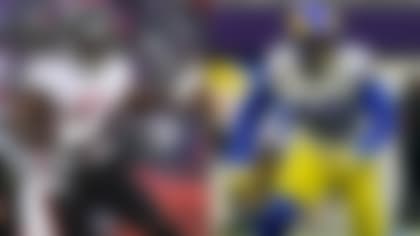When Charley Taylor passed away, we lost an NFL legend, a Hall of Famer who played his way to greatness over 14 years in Washington.
But if not for a twist of fate, he could have been a member of the Dallas Cowboys.
Before we get to that, let's go back to a chance meeting in my office that gave me a front-row view of an early turning point in Taylor's career. The first time I crossed paths with Taylor's story, on a June day in 1960, I was sitting in my office with the Cowboys, where I was vice president of player personnel, chatting with Arizona State assistant coach Gene Felker. My secretary called to tell me there was a man named Kentucky Clark and a woman named Mrs. Jones there to see me, to discuss Mrs. Jones' son's football potential.
I had no idea who they were, but I wanted to hear what they had to say, so I said they could come in.
Clark, a grocer, was accompanying Jones, whose son, Charley Taylor, had just finished an as a running back at Dalworth High School in Grand Prairie, Texas, where schools were segregated at the time. Taylor had earned all-state honors from the , which organized Black high schools in Texas during segregation. But despite his record of on-field excellence, she explained, he was only being recruited by Black schools at the next level -- in fact, the Southwest Conference, which was home to schools like Texas, Texas Tech and Arkansas, would not have a Black football player on a scholarship .Ìý
Taylor's mother, whose first name was Myrtle, said he wanted to broaden his college options, so that he could prove he could play against any competition. She'd brought a few canisters of Taylor's film with her, and she wanted someone to watch them and tell her just how good he was.Ìý
Felker agreed to take a look and went to a different part of the office to review the film. After about 20 minutes, he returned, declaring that Taylor had a scholarship offer at Arizona State.Ìý
Taylor proceeded to make himself into a first-round caliber prospect , and when the 1964 NFL Draft came around, we were ready to make him a member of the Dallas Cowboys. He had speed, size and route-running ability -- he was like a man among boys. I went to him and urged him not to sign with a team from the AFL, which was competing with the NFL for players in those days, because we wanted to pick him, and Taylor assured me he wanted to play in Dallas.
There was one problem, though. In those years, the draft was held during the season, when games were still being played, and as of the date of that particular draft (Dec. 2, 1963), Dallas and Washington had identical 3-9 records. Which meant we'd need to flip a coin to decide which team would pick third overall and which team would pick fourth.Ìý
I remember flipping the coin myself, in a hotel hallway, with a scout named Bucko Kilroy (who would later come work for us) representing Washington. Bucko won the toss, and Washington ended up grabbing Taylor before we could. Taylor logged 814 receiving yards and 755 rushing yards as a rookie, then transitioned to full-time receiver, leading the NFL in receptions in 1966 (with 72) and '67 (70). From 1964 to 1977, over the span of his career, Taylor racked up 10,598 scrimmage yards, second-most in that time, with 90 touchdowns, tied for the most. And, of course, he went on to become one of the
Our haul in Dallas, featuring Hall of Famers Mel Renfro, Bob Hayes and Roger Staubach, turned out OK. But I'll never forget the brushes I had with one of the best offensive players to set foot on a field.
Follow on Twitter.











